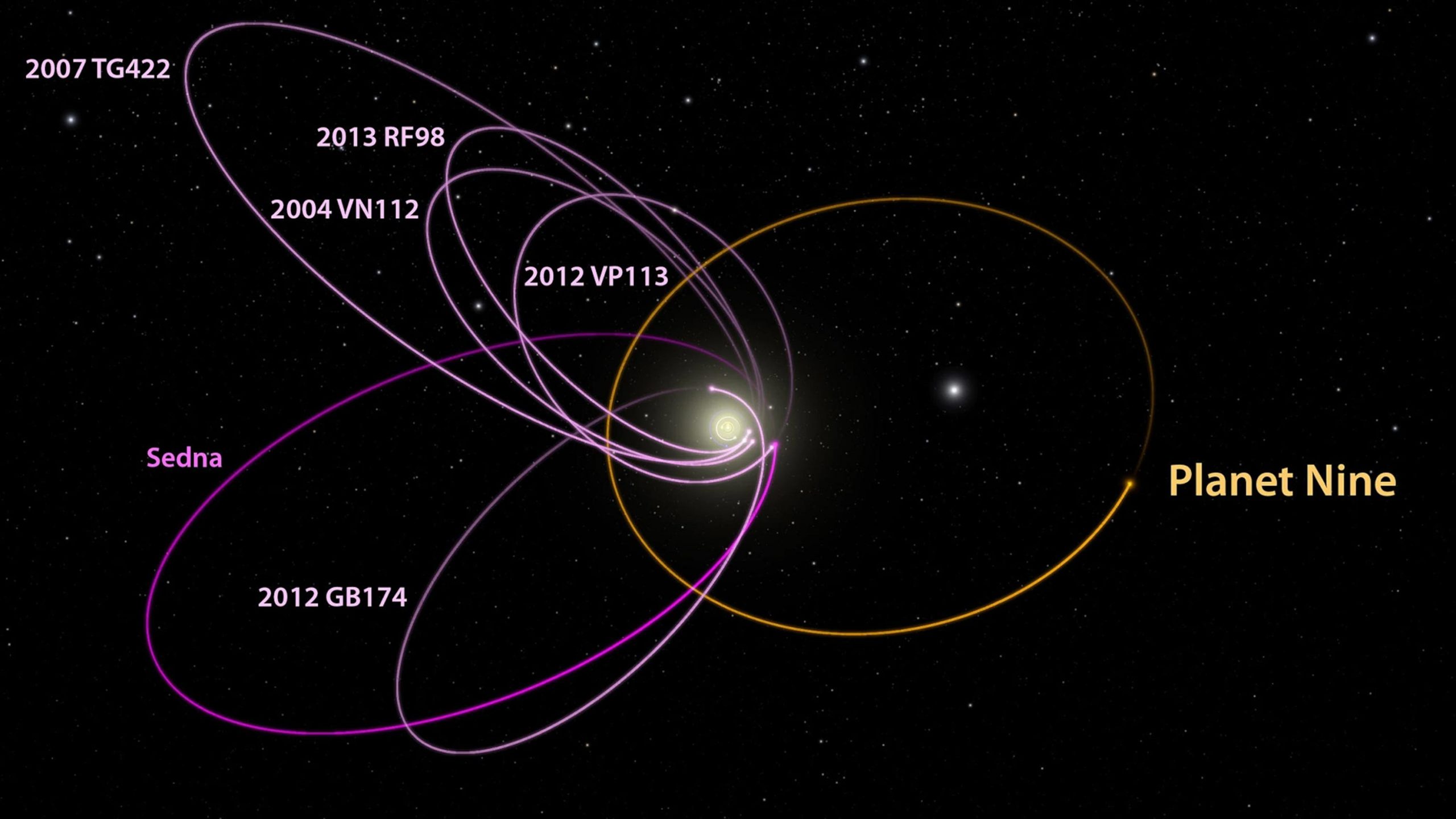
When it comes to scientists having a sense of humor, Caltech astrophysicist Mike Brown is one of the best, in my opinion. He is, after all, part of the team that discovered the dwarf planet Eris, so named for the goddess of strife and discord in part because of the controversy over what exactly defined a planet. That controversy led the International Astronomical Union to revise their planetary definition in 2006 and demoted Pluto to a dwarf planet as well. Dr. Brown then began using the Twitter handle plutokiller once the social media service was up and running, and his book is titled How I Killed Pluto and Why It Had It Coming.
Of course, debates about the status of Pluto still rage on the internet and among astronomers and planetary scientists. But that’s not the point of this particular story.
Just when you think Mike Brown couldn’t mess with our solar system any more than he already has, he and fellow astrophysicist Konstantin Batygin proposed back in 2016 that there might be a huge, undiscovered planet out in our solar system. The so-called Planet 9 (sorry, Pluto) is calculated to be about five times the size of Earth and ten times farther away from the Sun than Neptune. They based this hypothesis on the distribution of Kuiper Belt Objects (KBOs) and their orbits.
There is an odd clustering of these KBOs that should not happen if there isn’t another, larger body out there influencing their orbits. And those orbits should be randomly oriented with respect to the orbital plane of our solar system as well, but that’s not what we see, either. These two anomalies are what led to the calculations of the size and distance for Planet 9.
Basically, Planet 9, if it exists, is gravitationally pulling on these KBOs and has, over time, shifted their orbits into the clustering seen in the data. From the gravitational pull, you can calculate backward to the orbit of Planet 9. In fact, this is how Neptune was discovered; astronomers noted that Uranus was being pulled on by some unseen celestial body, they did some math, and voila, they found Neptune. So it’s not the first time our understanding of the solar system has shifted, too.
In that 2016 paper, Brown and Batygin even calculated where in the sky the planet might be found. And yet, nothing has come of the search for Planet 9… so far. Plus, there has been quite a bit of criticism of the original paper and its hypothesis, pointing out that the clustering of the KBOs may be due to observational biases. After all, we take telescope time when we can get it and we look where it’s convenient and possible.
Last week, Brown and Batygin published a new paper on the arxiv server that has also been accepted in The Astronomical Journal, and in it, they reexamined the data to account for any possible biases. What they found was that the clustering is still statistically significant with only a 0.4% chance of it being random. Then they recalculated where to look for Planet 9 and narrowed the field down even further than they had five years ago. Planet 9 may actually be closer than previously thought.
Now we wait for the Vera Rubin Observatory to come online to see if Mike Brown can make a mess of our solar system once again. I, for one, will joyfully welcome Planet 9 to the party, so fingers crossed!
More Information
Planet 9 May Be Out There – Here’s Where We Need To Look (SciTechDaily)
“The orbit of Planet Nine,” Michael E. Brown and Konstantin Batygin, submitted to The Astronomical Journal (preprint on arxiv.org)
“Evidence for a Distant Giant Planet in the Solar System,” Konstantin Batygin and Michael E. Brown, 2016 January 20, The Astronomical Journal




 Join the Crew!
Join the Crew!
 Escape Velocity Space News
Escape Velocity Space News
0 Comments